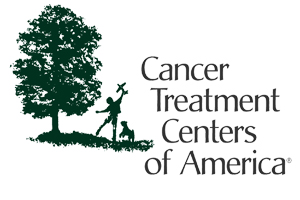 Cancer treatment can be extremely stressful on the body due to the effects of the chemotherapy, radiation and surgeries that are commonly used to fight the disease. Among the symptoms cancer patients typically experience are nausea, headaches, increased pain and stiffness in the bones and joints, sciatica, neck and lower back pain, and problems with moving and walking.
Cancer treatment can be extremely stressful on the body due to the effects of the chemotherapy, radiation and surgeries that are commonly used to fight the disease. Among the symptoms cancer patients typically experience are nausea, headaches, increased pain and stiffness in the bones and joints, sciatica, neck and lower back pain, and problems with moving and walking.
The health care team at Cancer Treatment Centers of America (CTCA) takes a whole-person approach to treatment and feels it is important to not only treat the cancer itself, but to also improve the patient’s overall well-being and quality of life; chiropractic care can play a significant role in achieving that end.
Dr. Howard J. Boos, a chiropractor at the Cancer Treatment Centers of America, says, “The first thing that people need to know about participating in chiropractic care if they have cancer is that chiropractic is not meant to treat cancer. My job, whether someone has a heart problem or cancer problem, is to help strengthen that patient.” Boos continues, “We want to find out what their symptoms might be; and that’s one part of it – the aches and pains – the other part is just making sure that the patient is functioning well.”
Chiropractic care can help restore strength, mobility and flexibility, while reducing stress. Dr. James Rosenberg, National Director of Chiropractic Care at CTCA, notes, “By adjusting and connecting the musculoskeletal dysfunctions, we often reduce stress to the nervous system, which in turn, can help restore the body’s ability to heal. It’s also a way of helping the body to function better.”
Chiropractors at CTCA will first take a look at the patient’s medical history, tests and any sort of diagnostic imaging that may have been performed (such as x-rays and bone scans), and make sure bone metastitis is not an issue before performing a chiropractic adjustment. They will then sit down with the patient to get an accurate view of the patient’s symptoms and pinpoint the sources of pain so they can develop an appropriate course of treatment tailored specifically to that person.
Patients are also educated by CTCA staff on ways to maintain the health of their musculoskeletal system, including lifestyle changes to alleviate strain on the patient’s bones, joints and muscles.
After treatment at CTCA, chiropractic care does not have to stop. According to Dr. Rosenberg, “The goals of chiropractic care depend on the goals of the patient. Oftentimes we can diagnose and begin to treat the source of the patient’s problem during his or her time at Cancer Treatment Centers of America at Midwestern Regional Medical Center. Once the patient has completed treatment at the hospital and returned home, we can make arrangements for him or her to continue chiropractic care with a local chiropractor.”

